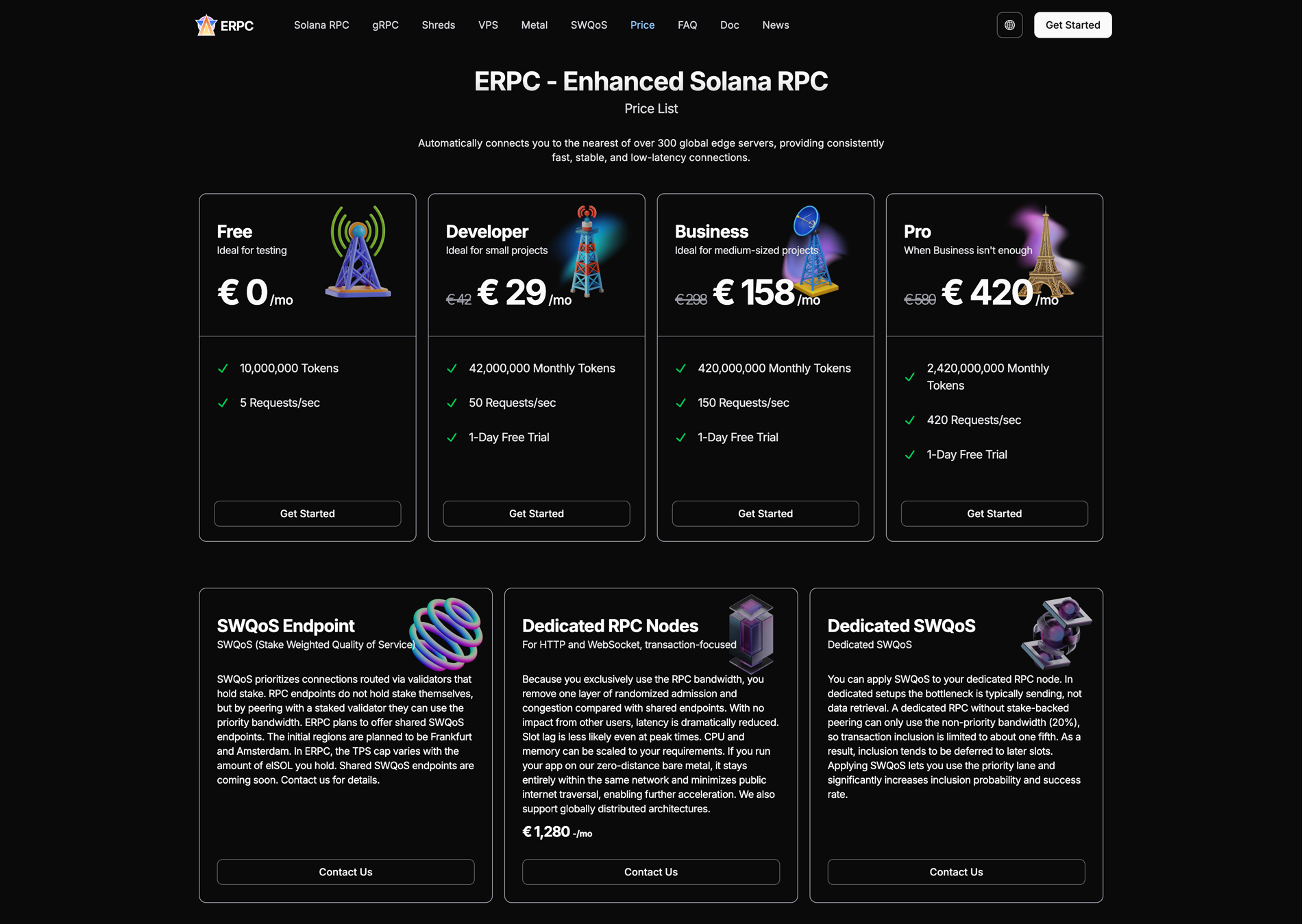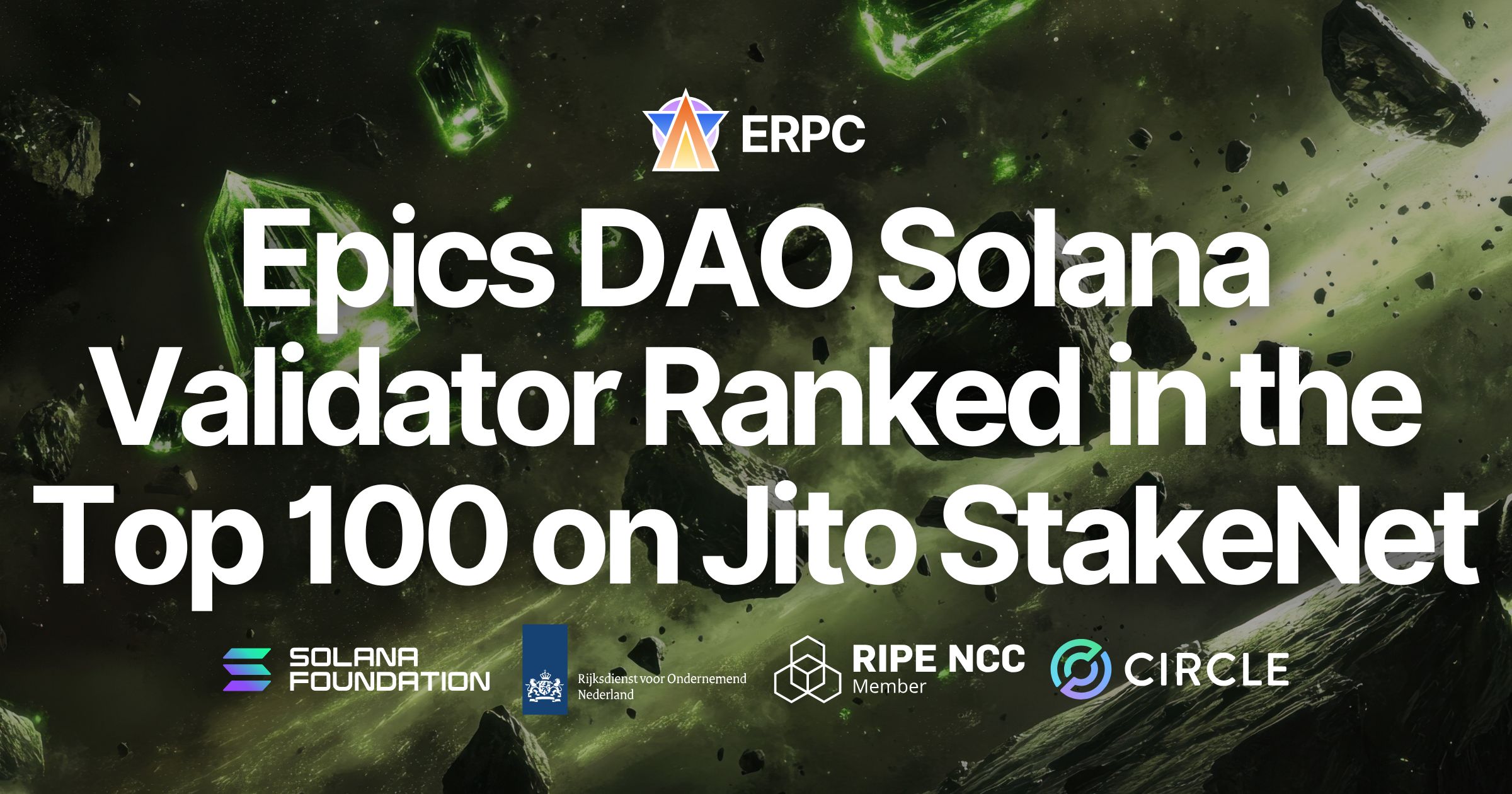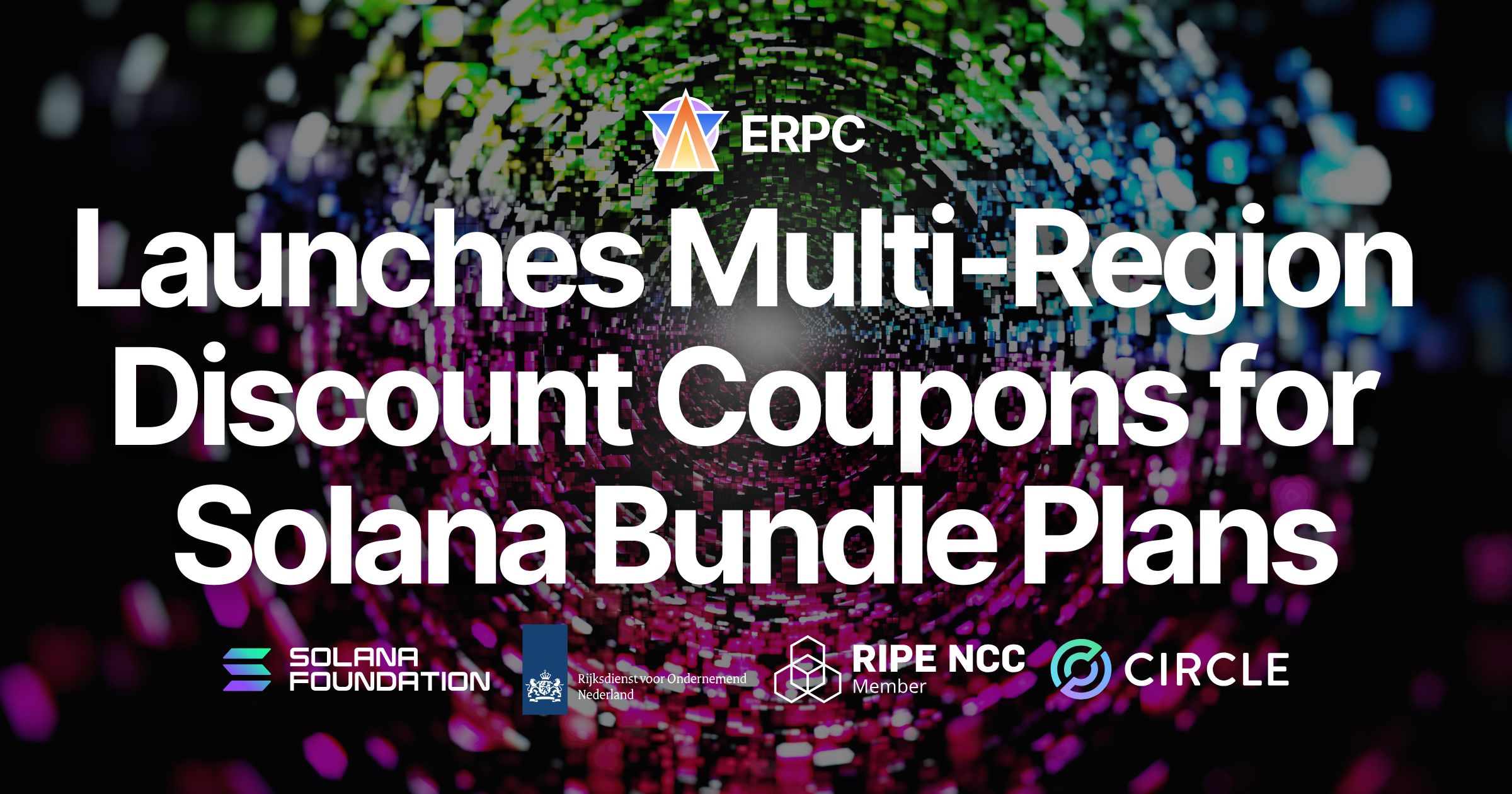For Solana App Performance, If You Want to Cut Even 20ms, Dedicated RPC Endpoints + SWQoS Are the Key
For Solana App Performance, If You Want to Cut Even 20ms, Dedicated RPC Endpoints + SWQoS Are the Key

In high-frequency trading and mission-critical Solana applications, even 20ms can make a decisive difference. Dedicated RPC endpoints and shared RPC endpoints differ in their fundamental design, and this 20ms gap can never be closed. This article explains why, and how ERPC solves the problem end-to-end.
Cutting 20ms by Using http Instead of https
You may have noticed that RPC endpoint URLs usually begin with https. The “s” stands for TLS/SSL encryption, which secures communications. However, this encryption requires a handshake and constant encryption/decryption, adding around 20ms of latency on every request.
In other words, if RPC communication is performed over http instead of https, this 20ms can be eliminated at the root. In Solana, where block auctions are settled in roughly 50ms, this difference is critical.
Why http Cannot Be Used on Shared Endpoints
Some may ask, “Then why not allow http on shared endpoints?” The answer is simple: it is impossible.
Allowing http in a shared environment would mean unencrypted communication, exposing transactions to man-in-the-middle attacks, packet interception, and even theft of signed transactions. An attacker using the same shared endpoint could realistically tamper with or replay your transactions.
For this reason, shared endpoints must always enforce TLS/SSL. Our shared RPC endpoints are engineered to be as fast as possible within this restriction, but the 20ms overhead of TLS cannot be removed by design.
How Dedicated RPC Eliminates the 20ms
Dedicated RPC endpoints restrict access to specific trusted clients. This allows us to remove the TLS requirement and permit direct http communication.
As a result, a 20ms reduction is guaranteed. Regardless of user load or attack risks, this structural difference ensures that the 20ms gap between shared and dedicated endpoints will never be bridged.
The Remaining Challenge: SWQoS
Speed alone is not enough. Solana enforces Stake-weighted QoS (SWQoS), where nodes without stake-based trust are restricted to just 20% of the available transaction lanes.
For example, Lite-RPC designs that send transactions directly to the current leader validator may appear fast, but without SWQoS they are still limited to that 20% lane. This means that even if the packet arrives quickly, it will face significantly lower inclusion rates.
Using dedicated RPC to cut 20ms is critical, but combining it with SWQoS is essential to achieve both speed and transaction success.
ERPC provides an option to enable SWQoS on dedicated RPC endpoints.
This means you can combine Dedicated RPC + SWQoS to achieve both latency reduction and higher success rates.

The Problems Validators DAO and ERPC Solve
ERPC solves the following problems:
- Transaction failures and latency fluctuations in RPC environments
- Performance throttling by many infrastructure providers
- The heavy impact of network distance on communication quality
- Limited access to high-quality infrastructure for smaller projects
While developing Epics DAO, an open-source Solana NFT card game, we faced the difficulty of building a truly high-performance, low-latency Solana development environment. This challenge led us to design our own platform, and from this foundation we now provide both ERPC and SLV.
Financial and other mission-critical applications are especially sensitive to latency and errors, as they directly affect user experience. Solana environments are highly complex, and unlike traditional internet finance, validators are distributed globally. Combined with the added complexity of Web3 knowledge, it is difficult for developers to fully grasp the entire picture, which has slowed progress on optimization.
By delivering high-performance Solana infrastructure, we aim to remove these obstacles and enhance user experience across the ecosystem. ERPC and our open-source SLV project are both integral to this mission.
- ERPC Official Website: https://erpc.global/en
- SLV Official Website: https://slv.dev/en
- Epics DAO Official Website: https://epics.dev/en
- Validators DAO Official Discord: https://discord.gg/C7ZQSrCkYR




